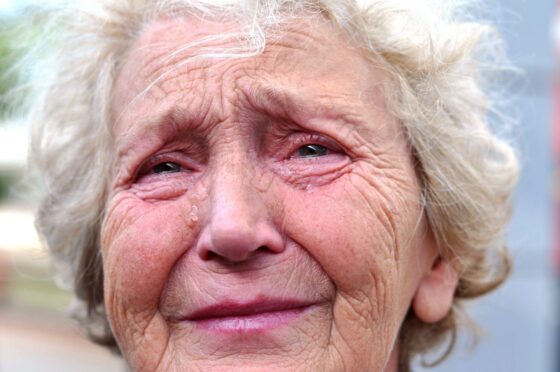Nobody wants to stay in hospital any longer than they need to. So what happens when at the end of your medical care you are unable to be discharged?
What is ‘bed blocking’?
This is a situation known officially as a “delayed discharge” and better known as “bed blocking”.
Officially this happens when a patient who is “clinically ready for discharge” is unable to be released as the “necessary care, support or accommodation” is not easily available and/or the funding (for example to pay for a placement in a care home) is not available.
A prolonged stay in hospital can increase the risk of hospital-acquired infections in older patients and cause shortages in the available number of beds, affecting patient care and flow.
It also costs the NHS money to keep clinically fit patients in hospital care.
Public Health Scotland calls timely release from hospital an “important indicator of quality” as it shows that the care the patient has received has been “person-centred, effective, integrated and harm-free”.
Delayed discharge can cause harm to NHS patients

Lengthy unnecessary hospital stays involving prolonged bed rest have also been shown to put the patient at increased risk of muscle wastage, pressure sores, and loss of independence.
We’ve collated the following collection of charts that show the current ‘bed blocking’ situation across Scotland’s health boards.
For added context to the delayed discharge data we’ve also included data that shows hospital occupancy.
The data is from NHS Scotland open data and we will update the charts when new data is available.
What is the target for NHS delayed discharges?
The government have no set targets for either the number of delayed discharges or for the level of staffed beds that should be available at any given time.
‘Bed blocking’
Due to the increasing complexity of their care needs, older people tend to be more likely to suffer a delayed hospital discharge.
The chart below shows the breakdown of delayed beds by age group.
There are many reasons provided for discharges being delayed in the official statistics:
- Health and social care reasons – this could be something like the patient is awaiting a placement in a care home, or is being allocated a home care provision that needs to be set up
- Patient and family reasons – this is commonly used where patients require changes to their home prior to being discharged. For example for wheelchair accessibility or railings to be put in place.
- Code nine – this code is used in the most complex of cases. This category was introduced in 2006 and can include situations where the patient requires a bed in a specialist facility, where no specialist facilities exist within the area, or where the patient is undergoing an Adults with Incapacity assessment which involves a legal process which can take time.
The chart below shows the number of delayed discharges broken down by the reason provided by the health board.
Hospital occupancy
Hospitals must balance the number of available staffed beds against anticipated demand in order to provide a safe, efficient and effective service.
The charts below give information on bed occupancy for acute hospital care.
This includes medical and surgical specialty groups such as consultation with specialist clinicians; emergency treatment; routine, complex and life-saving surgery; specialist diagnostic procedures; close observation; and short-term care of patients.
Public Health Scotland states that “evolving models of healthcare provision aim to reduce the frequency and duration of hospital admissions and improve the integration of health and social care services” which involves a reduction in the total number of beds in the long term.
The chart below shows the data on total available staffed beds and occupancy of beds for acute care across Scottish hospitals.
Use the dropdown to select the area you are interested in.
Data is also available showing beds occupancy broken by specialty type, which are shown in the chart below.
Public Health Scotland said that, while there are no national targets for bed occupancy, local health boards might have internal performance targets.
Typically in most areas of Scotland beds for medical specialties have been more full than those for surgery.
However, this is not the case for all health boards.
Use the dropdown to view different areas.
If you have been impacted by long waiting times and wish to share your story, please fill in the form below.
More health data
This article is part of a series that aims to make data about waiting times and pressures on the NHS more accessible and easy to understand.
You can view the rest of the series below.
The charts in this tracker series are automatically updated with the latest available data from Public Health Scotland. The source code for this project can be found on our data team GitHub page.




















Conversation